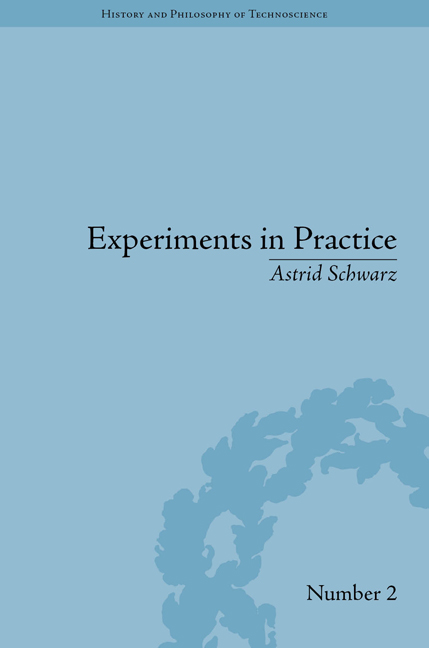Book contents
- Frontmatter
- CONTENTS
- List of Figures
- Introduction: Towards an Experimental Mode in Science, Society and Philosophy
- Part I Questioning the Scientific Method
- Part II Different Modes of Experimentation
- Part III Tirelessly Tinkering with Unruly Conditions
- 7 Stretching the Baconian Contract – but How Far?
- 8 About the Epistemology and Culture of Borders/Boundaries
- 9 Excursus: ‘Bridging Science’ or ‘Problem-Based Science’?
- Part IV Practising Experiments in a World of Environmental Concerns
- Conclusion: Experiments in Practice – the Work of Experiments
- Notes
- Works Cited
- Index
9 - Excursus: ‘Bridging Science’ or ‘Problem-Based Science’?
from Part III - Tirelessly Tinkering with Unruly Conditions
- Frontmatter
- CONTENTS
- List of Figures
- Introduction: Towards an Experimental Mode in Science, Society and Philosophy
- Part I Questioning the Scientific Method
- Part II Different Modes of Experimentation
- Part III Tirelessly Tinkering with Unruly Conditions
- 7 Stretching the Baconian Contract – but How Far?
- 8 About the Epistemology and Culture of Borders/Boundaries
- 9 Excursus: ‘Bridging Science’ or ‘Problem-Based Science’?
- Part IV Practising Experiments in a World of Environmental Concerns
- Conclusion: Experiments in Practice – the Work of Experiments
- Notes
- Works Cited
- Index
Summary
In the following a case study is presented that elaborates ‘aquatic ecology’, analysing its transgressive character as a domain of research located somewhere between the social and the natural sciences and between the more applied and more theoretical domain. It seems that aquatic ecology is caught up in a permanent oscillation of basic concepts (or paradigms) involving experimentation with concepts and practices.
One of the co-founders of the International Association of Theoretical and Applied Limnology, August Thienemann, was quick to recognize the interrelationship between politics and science and between industry and the state in the sphere of ecological research. He sought to make use of it not only in conceptual terms but also as a tool for institution building. Thienemann wanted limnology to be seen as a ‘bridging science’ (Brückenwissenschaft) and to be recognized for ‘its great cultural significance for our times’. Thienemann borrows the notion of a ‘bridging science’ from a text that was programmatic not just for limnology as an ecological science. The Structure of Wholes (Die Struktur der Ganzheiten) was written by philosopher Wilhelm Burkamp (1929) and is repeatedly referenced by Thienemann. What seems capture Thienemann's imagination in particular is Burkamp's characterization of the new sciences as problem-based, methodological and factually structural wholes. This supports his own conception according to which the unique character of limnology is grounded in ‘the [research] object and in the methods’.
- Type
- Chapter
- Information
- Experiments in Practice , pp. 137 - 140Publisher: Pickering & ChattoFirst published in: 2014

